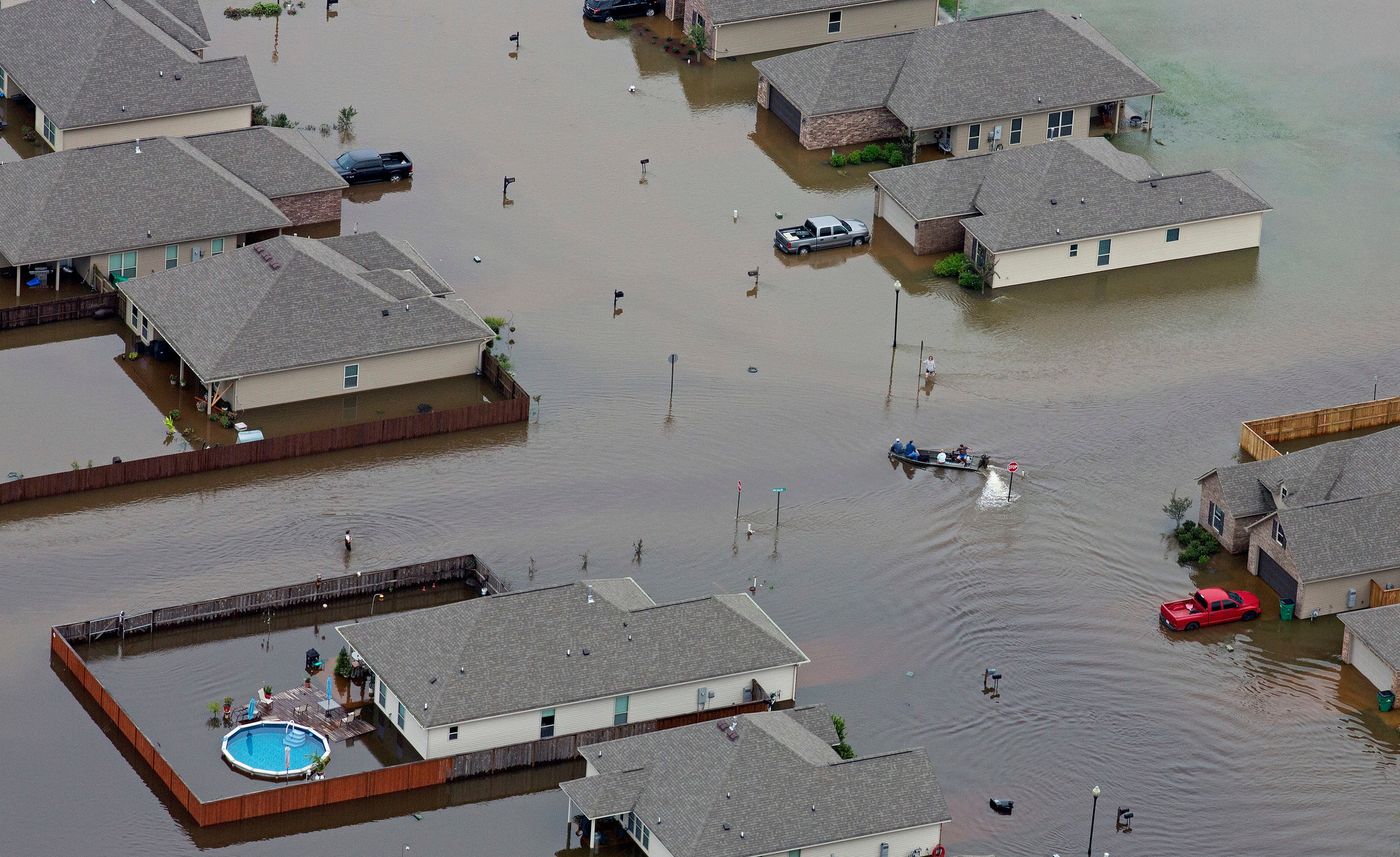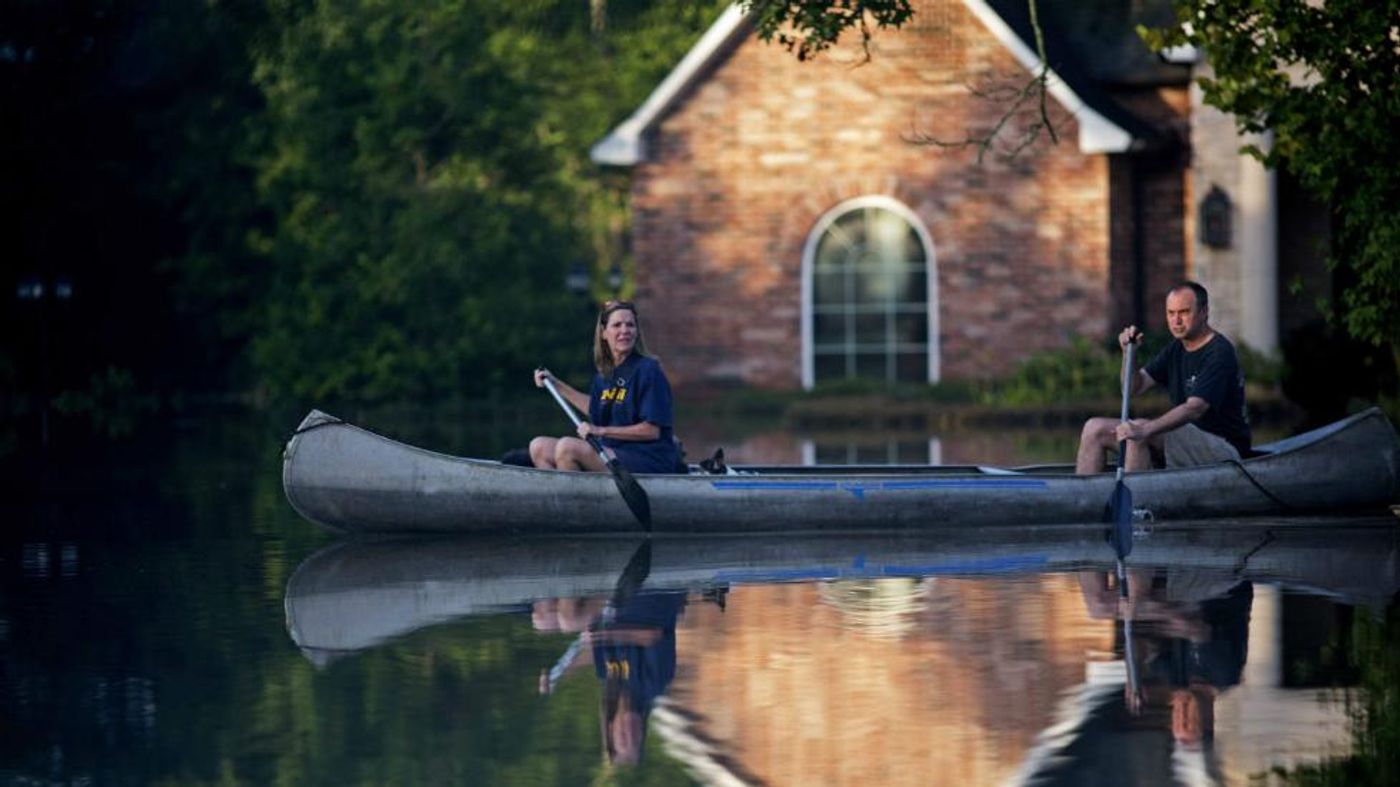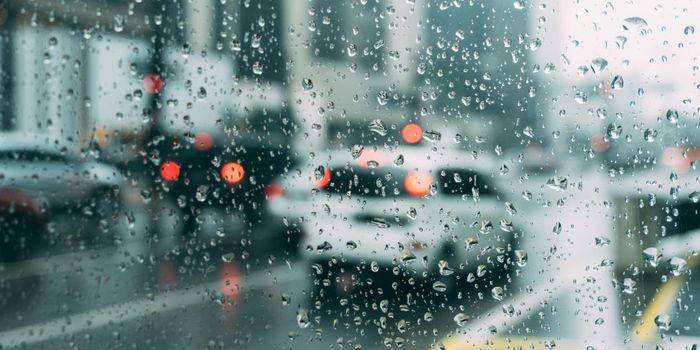A climate disaster has struck Louisiana with major flooding throughout the southern part of the state. At least 40,000 homes have been impacted. The current death toll is 11 people, while 30,000 people and 1,000 pets have been rescued. 40,000 people have registered with FEMA for disaster assistance.The governor, John Bel Edwards, expects close to 30 parishes to be declared disasters, CNN states, which is nearly half of the state's 64 parishes.

Boats motored along flooded streets in Hammond, La., on Saturday. Credit Max Becherer/FR 171354AP, via Associated Press..
The federal government declared a major disaster after days of torrential rain inundated the state, flooding thousands of homes and prompting thousands of water rescues.The downpours have sent at least six river gauges to record levels in Louisiana. This includes the Amite River, which exceeded its previous record by over 6 feet in Magnolia, and by over 4 feet in Denham Springs.
Louisiana is not the only state to experience these deadly floods. Oklahoma,Texas, South Carolina and West Virginia have also had extreme flooding in the last 15 months. In the last three months alone, floods in Maryland, West Virginia and Louisiana have combined to kill dozens of people and damage tens of thousands of homes and vehicles. Following
The New York Times, the flooding in Louisiana is the eighth event since May of last year in which the amount of rainfall in an area in a specified window of time
matches or exceeds the NOAA predictions for an amount of precipitation that will occur once every five hundred years, or has a 0.2 percent chance of occurring in any given year.
The following aerial footage shows the devastation that is hemorrhaging Louisiana right now.
Overall these empirical cases point unambiguously to climate change.
The drastic increase in heavy rainfall and the resultant flooding “is consistent with what we expect to see in the future if you look at climate models,” said David Easterling, a director at the National Centers for Environmental Information, which is operated by the National Oceanic and Atmospheric Administration. “Not just in the U.S. but in many other parts of the world as well.”

Prairieville, Louisiana, August 16, 2016. Photo: Max Becherer
“This is exactly what scientists have been predicting,” said the climate activist Bill McKibben. “The basic physics are simple: Warm air holds more water vapor, something that is turning out to be one of the most important facts of the 21st century.”
Sources:
The Weather Channel,
The New York Times,
NBC News










